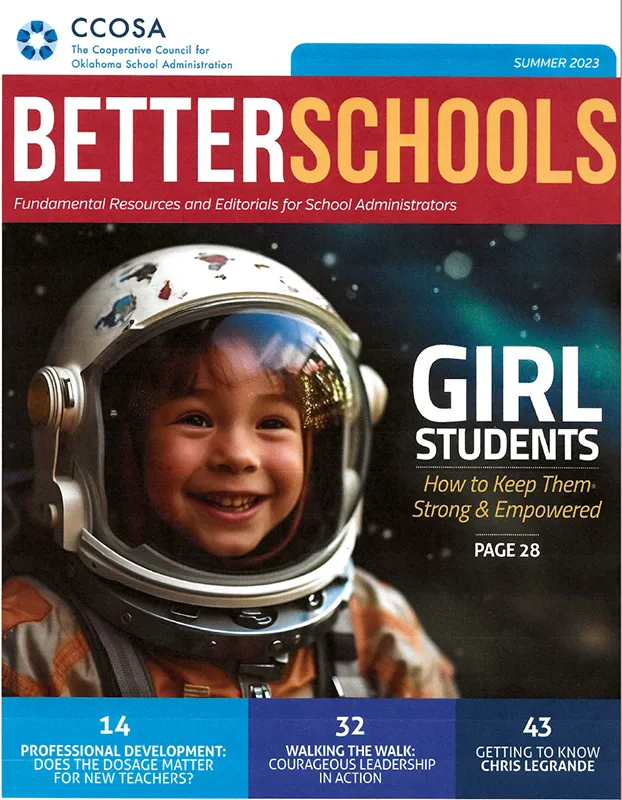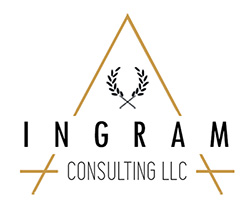 As unique as a fingerprint, every leader encompasses a combination of attributes and limitations. But leaders steeped in the work of tangible change must share one common attribute – courage. As I pause to consider Oklahoma leaders, present and past, who embody the kind of courage that can change the world, Kyle Reynolds, Deborah Gist, and Keith Ballard come to mind. While the world is not ours to conquer as education leaders, I agree with Lindsay Whorton, president of the Holdsworth Center, who asserts that public schools will be a critical arena for courageous leadership and change.
As unique as a fingerprint, every leader encompasses a combination of attributes and limitations. But leaders steeped in the work of tangible change must share one common attribute – courage. As I pause to consider Oklahoma leaders, present and past, who embody the kind of courage that can change the world, Kyle Reynolds, Deborah Gist, and Keith Ballard come to mind. While the world is not ours to conquer as education leaders, I agree with Lindsay Whorton, president of the Holdsworth Center, who asserts that public schools will be a critical arena for courageous leadership and change.
When I reflect on my leadership journey, I recall triumphs and failures in courageous leadership. Courageous leadership requires cultivation and practice. As a superintendent, leading with courage required my getting out of the executive suite. It required connection, and most importantly, courageous leadership required that I showed up authentically and unapologetically.
Connection
We need community. As leaders, it is critical that we understand the need to engage with others as we go about our work. As education leaders, we rely on an organizational structure to populate our innermost circle. Quite literally, the organizational structure is a chart that defines who comprises our community and their roles within it. But the tentacles of leadership connections must extend far beyond our chiefs and executives. Courageous leadership brings with it a skill of meeting communities where they are. Stripping learned vernacular and highbrow language of the boardroom to plain, easy-to-understand language and descriptions invites ideas and perspectives that are fresh and valuable. Making these connections yourself as a leader eliminates that old game of telephone, where the original message loses integrity through varied interpretations and variations of the messengers. Closely aligned with connection is an openness to solicited and unsolicited feedback offered by your community.
Authenticity
The Harvard Business School defines authenticity as a leadership style exhibited by those with high standards of integrity, taking responsibility for their actions, and making decisions based on principle rather than short-term success. They use their inner compasses to guide their daily actions, which enables them to earn trust. For me, a personal breakthrough in this area took the form of three little words – “I don’t know.”
For years, I held the notion that as a leader I needed to have the answers to all things. Through my practice of courageous leadership, I have learned the power of “I don’t know.” Inevitably, a statement of my intention to research and learn more about what is unknown follows. It has been my experience that showing up authentically in this small way builds trust in me as a leader and cultivates a healthy work environment.
While connection and authenticity are foundational to my personal practice of courageous leadership, University of Houston research professor, author, and podcast hostBrené Brown’s work has helped me identify vulnerability, clarity of values, trust, and rising skills as the pillars of courageous practice.
Vulnerability – Brown defines vulnerability as uncertainty, risk, and emotional exposure. She says leaders exhibit courageous leadership when they are willing to be vulnerable even though it means they may fail. There is ample room for vulnerabilities in the field of public education. The dedication that educators have to their craft often lends itself to a lifetime career. It is not unusual for our dedicated educators to spend 30 or more years honing their craft. While admirable, the longevity may chip away at the sense of urgency and the openness to change that is absolutely necessary to reimagine public education. As leaders of change, we must expose ourselves to the risk of failure when we implement sweeping, innovative means of change.
Clarity of Values – The future of public education is ripe with controversy. The national debate about disparate educational outcomes and the partisan divide over Diversity, Equity, and Inclusion in K-12 education for example, have been in the news and garnered attention for quite some time. As a nation, we have just barely begun cultivating a climate for honest, constructive dialogue about the ways in which race and racism influence American education. Nothing grounds me more in this work than the immense value I place on equity in education. It is the lens through which every decision I make is evaluated. Courageous leaders are not silent about hard issues that threaten the system of public education.
Trust – Cultivating a culture of trust takes intentional and hard work and it is a long game. Transparency is the building block of trust for education leaders. It takes courage for a leader to share their inner workings with stakeholders at all levels from cabinet, faculty and staff to families and the community writ large. The effort involved includes strategic outreach, genuine collaboration, honest communication, and most importantly, demystification. People fear what they do not understand, so it is the duty of a courageous leader to help them understand and transparency is the tool.
Rising Skills – “Don’t judge me by my successes. Judge me by how many times I fell down and got back up again.” This quote by Nelson Mandela gets to the heart of courage. Courageous leadership is not about fearlessness or perfection. It is built upon a foundation of relentless dedication that embraces the unknown, the untested, and that which may seem impossible. Courageous leadership is as unique as a fingerprint, rooted in an individual’s hope and belief and the fire burning deep within them to dare greatly.
